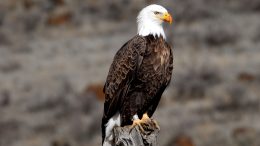Two federal programs that experts consider indispensable for bird research and conservation in the United States could be eliminated under the Trump administration’s proposed budget for 2026.
If you’re not an ornithologist, you’ve probably never heard of the Bird Banding Laboratory or the Breeding Bird Survey, two federal programs managed by the U.S. Geological Survey. But birds in this country — and around the world — would be much worse off without these two programs, which I covered at length in my 2023 book on the history of bird migration research.
The Bird Banding Laboratory has a history in the federal government that stretches back over a century. As you might guess from its name, the program oversees bird banding in the United States — the process through which bird researchers humanely capture wild birds, place uniquely numbered metal bands around their legs, and release them. Tracking banded birds allows researchers to learn something about their lives and movements and has produced mountains of scientific data.
The Breeding Bird Survey, meanwhile, began in the 1960s. It enlists thousands of eager volunteers each spring to carry out surveys of local birds across the continent, providing long-term data on whether populations are increasing or decreasing over time. We wouldn’t know how well common but vulnerable birds, from hawks to hummingbirds, are doing without these annual surveys.
But that barely scratches the surface about how central these two programs are to bird conservation efforts in North America — and what we would lose if they’re defunded.
Most wild birds in the United States are protected by a law called the Migratory Bird Treaty Act, which makes it illegal to handle or capture them without a permit. And because nearly all research that involves capturing wild birds includes banding them, scientists generally obtain those permits through the Bird Banding Laboratory.

“The BBL ensures that all people banding birds are prioritizing wildlife safety, are appropriately trained, and are conducting meaningful research that justifies capturing wild animals,” Joely DeSimone, a researcher at the University of Maryland Maryland Center for Environmental Science, tells me by email. “I’ve been working in the field of migration physiology and ecology since 2016, and every project I’ve worked on in that time has included the Bird Banding Lab because this work included the capture and release of wild birds. Every bird we capture receives an aluminum band issued by the BBL, and its data is reported to and managed by the BBL.” It’s unclear how, or if, researchers like DeSimone would continue to obtain the necessary permits for their work if the laboratory were eliminated.
Bird Banding Lab staff also oversee the treasure trove of data that results from bird banding: records of what bird species have been captured where and when that go back more than 60 years. Any curious scientist can delve into this data to look for patterns, and researchers have used it to, among many other things, quantify how the timing of bird migration has gradually shifted in recent decades as the climate has warmed.
Banding is also an incredible outreach tool for engaging the public in bird conservation.
“The vast majority of bird banding stations open their sites to visitors, engage them in discussions, let them watch the banding process, and see wild birds up close,” says DeSimone. “These public engagement experiences — which are happening in communities across North America — can not only inform and excite visitors about birds and conservation, but also … perhaps more impactfully, introduce visitors to scientists and the scientific process.”
The Breeding Bird Survey offers a different window into North America’s bird populations — one based not on capturing them, but on simply spending time outdoors counting them.
The survey “has got to be the most ambitious effort in human history to study a non-human, wild set of organisms across a continental scale,” says ornithologist Benjamin Freeman, an assistant professor at the Georgia Institute of Technology. “It gives us this amazing annual check-in of which birds are living where and how many of them are there — just astonishing information on how birds are doing in North America.”
The Breeding Bird Survey is one of our top sources of information on bird population trends — whether species are increasing, declining, or holding steady in regions across the continent. That’s crucial data for planning and prioritizing conservation efforts.
Among other things, the program’s data provide the basis for the State of the Birds, a periodic status assessment produced by a group of government organizations and conservation nonprofits.
“Scientists, practitioners, and decision-makers rely upon data from the North American Breeding Bird Survey to understand long-term changes in bird populations. There is no substitute,” says the Cornell Lab of Ornithology’s Amanda Rodewald, who chaired the committee that assembled the 2025 State of the Birds report. “BBS data have been instrumental in alerting us to worrisome declines, pointing to conservation success stories, and providing us with a lens to understand environmental conditions that affect us as well as birds.”
Although newer community science platforms such as eBird are beginning to offer similar data on trends in bird populations over time, they can’t replace long-term, standardized surveys such as those carried out by Breeding Bird Survey volunteers.
“The strength of the BBS is that it’s very structured,” says Freeman. “Everyone’s doing the same thing every year.” If the program ends, it will mean the end of additions to this unique, high-quality dataset.
The Trump administration’s proposed budget would flatline these two programs as well as the entire USGS Ecosystems Mission Area, which currently has an annual appropriation of just $307 million. That’s a tiny fraction — less than 0.00005% — of the annual budget of the federal government.
I tried to contact USGS staff who actually work on these programs for comment. What I eventually received was an emailed statement from a Department of the Interior spokesperson which read, in its entirety, “Interior proudly supports President Trump’s ‘One Big Beautiful Bill’ — a historic, America First budget that delivers middle-class tax cuts, unleashes American energy, secures our borders, and invests in the infrastructure and security of our public lands.”
Perhaps, at a time when so many aspects of our civil society are under threat, it seems frivolous to worry about gathering data on birds. But I’d prefer to live in a version of America that invests a little less in “unleashing American energy” and “securing our borders” and a little more in studying and protecting our wild neighbors.

Previously in The Revelator:
What’s Being Done to Public Lands Is a Crime


